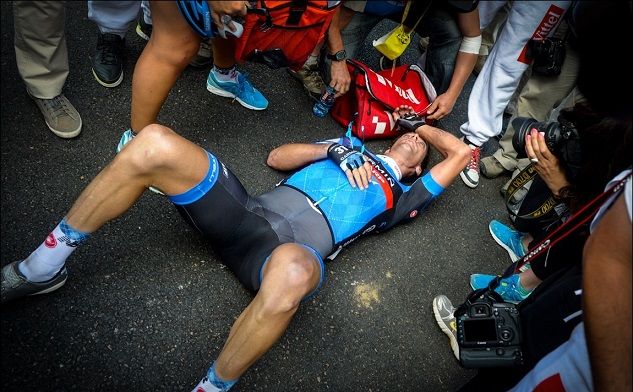Anyone can suffer from overtraining and in fact, it’s more likely to occur in beginner cyclists as they try and do too much, too soon.
It’s when excess spills over into daily workouts that the real problems rear their heads. For all the athletes looking to coaches for help meeting objectives, some athletes have trouble knowing when to stop pushing. Overtraining Syndrome, the point at which a body endures more damage during exercise than it can repair, is a real concern for cyclists—especially those with lofty goals.
“It’s very common among endurance athletes,” says Dr. Frank Wyatt, a professor in the department of athletic training and exercise physiology at Midwestern State University in Wichita Falls, Texas. “In fact, when most athletes are peaking, they’re right on the edge of overtraining.”
Let’s look at the symptoms cyclists can experience when they over-train. They can:
- get a washed-out feeling
- feel tired
- get grumpy and experience sudden mood swings
- become irrational
- feel a lack of energy for other activities
- suffer from depression
- have a decreased appetite
- get headaches
- get an increased incidence of injuries
- have trouble sleeping
- feel a loss of enthusiasm for the sport
- experience a sudden drop in performance
Sleep Well
First, one of the top things that you must keep in check is your sleep needs. If you are not sleeping enough each evening, this is going to sacrifice the recovery you make between rides and will most definitely put a dent in your recovery.
You should be sleeping at least 7 hours, preferably 8 or more during intense training times.
Active recovery days
A recovery day allows your body to restore and repair, so when you ask it to go hard, you can give your efforts 100%, instead of 80%. Remember you need to be able to train above threshold, in order to improve your threshold level. If you are constantly in a state of fatigue and training below threshold, you will never see improvements.
An active recovery day can sometimes help speed up recovery. This can be something like a 20 minute easy spin on the rollers and then 20-30 minutes of stretching, using a foam roller and putting pressure on the glutes with a spikey ball.
Don’t Fear Carbohydrates
Make sure that you are eating enough carbohydrates as well. If weight loss is your goal, you may be cutting back on this particular nutrient quite readily in your diet, but that will set you up for some problems down the road. As your glycogen stores become more and more depleted, you will notice that it becomes harder and harder to do the rides you set out to do. Eventually, high amounts of fatigue will set in and when they do, your rides will cease to exist. Overtraining will set in and you’ll be required to take time off.
Have a nothing day
Don’t be afraid to simply take the day off. Don’t train or do anything. Often, athletes say that the last thing they want to do on a rest day is to pull on a chamois and spin their legs. The temptation of a coffee shop spin doesn’t entice them. They really want to completely rest.
They are happier to take the dog for a walk in the park, or literally do absolutely nothing. They want to do no exercise at all and literally just put their feet up and chill!
Take a Blood Test
Dr. Frank Wyatt says certain biological markers can indicate overtraining—like decreases in testosterone and hemoglobin—but you’d need a blood test (and a good baseline) to accurately use these biomarkers. And since overtraining syndrome has quite a few no-needle-required signs, it’s probably easier to simply look out for sleep interruptions and changes in appetite.















Take a trail bike ride. No need for speed, just spin. Great for bike handling skills and concentration. The upper body gets a workout throwing a heavy bike around while the cardio takes a holiday. Ferris: Life moves pretty fast. If you don’t stop and look around once in a while, you could miss it.